| Japanese | English |
In this series of the measurement report, I analyzed the engine sound recordings of a movie. The movie was dubbed to a digital video tape, and transferred to the PC via iLINK connection. The video camera I used is SONY DCR-PC3-NTSC, and the PC is SONY VAIO PCG-R505R/DK. Pictures in the following pages are taken from the screen. Captured sounds were saved as wav files, so that I can analyze them repeatedly.
This time is the analysis of the engine sound of F40 competition at the time of high-speed corner passage. This car is the race specification of F40 and its horsepower output is 750H.P.
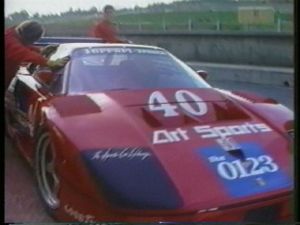
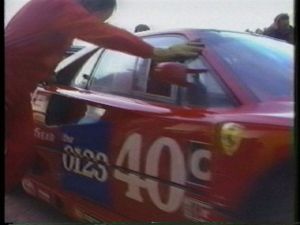
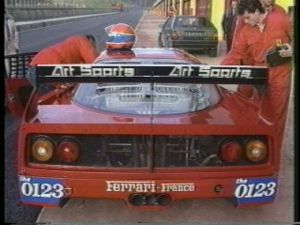
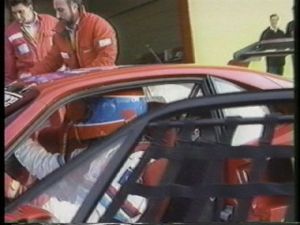
Sound file starts from this frame.
F40 competition is running into the left corner.
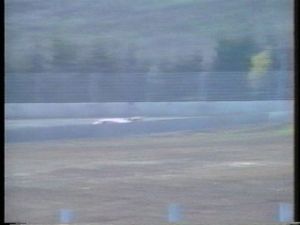

Cornering.
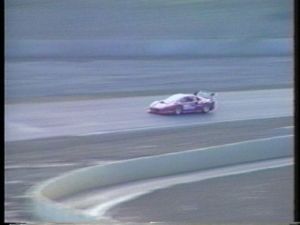
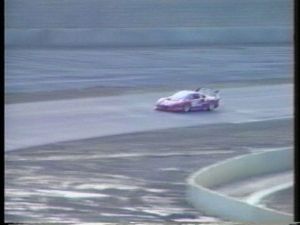
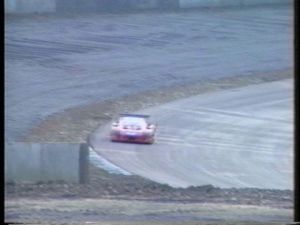
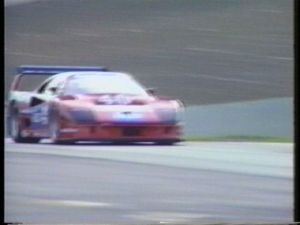
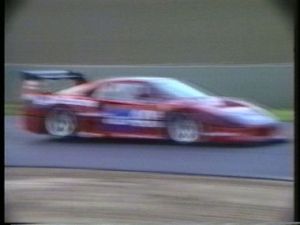
![]() car2.wav (44.1kHz / Mono / 10sec / 862KB)
car2.wav (44.1kHz / Mono / 10sec / 862KB)
Same as last time, the wav file was loaded on the Recorder and analyzed by the FFT analyzer of the Realtime Analyzer (RA) of DSSF3. Roughly seeing the sound waveform, the volume increases at 2 seconds and 5 seconds.
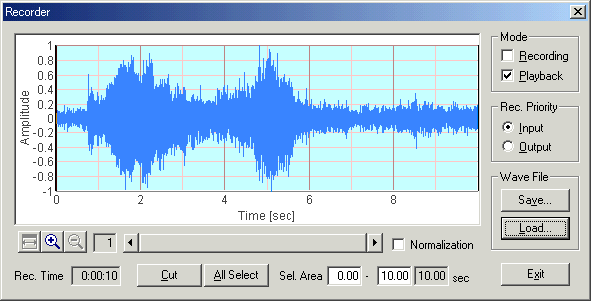
Below is the spectrogram of the loaded sound for 10 seconds. Sound energy at a given time and frequency is displayed by the different color. Red area indicates the strong frequency component contained in the sound.
At a first glance, the sound is dominated by the strong tonal (harmonic) components, represented by the thin red or yellow lines. Pitch of the sound is increasing throughout the recording, meaning the engine speed is becoming higher and higher. Gear shift points can be found at around 1.0 s and 7.5 s, where the frequency drops rapidly and increases again.
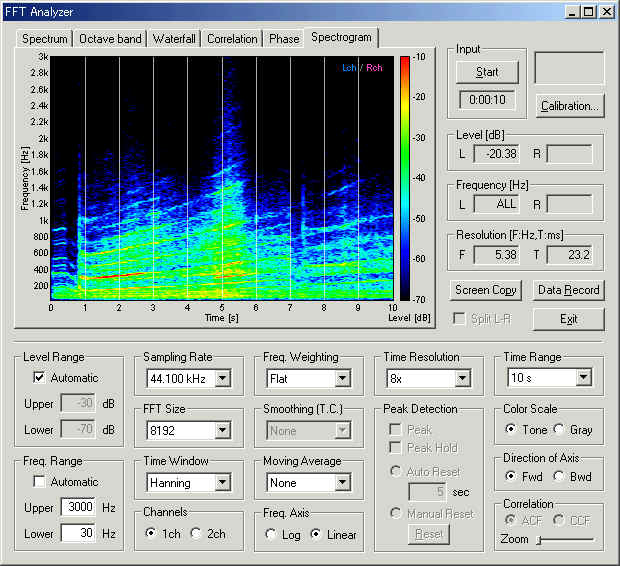
After the window was maximized by clicking the ![]() button, the measurement was started by Alt+S keys (keyboard shortcut).
button, the measurement was started by Alt+S keys (keyboard shortcut).
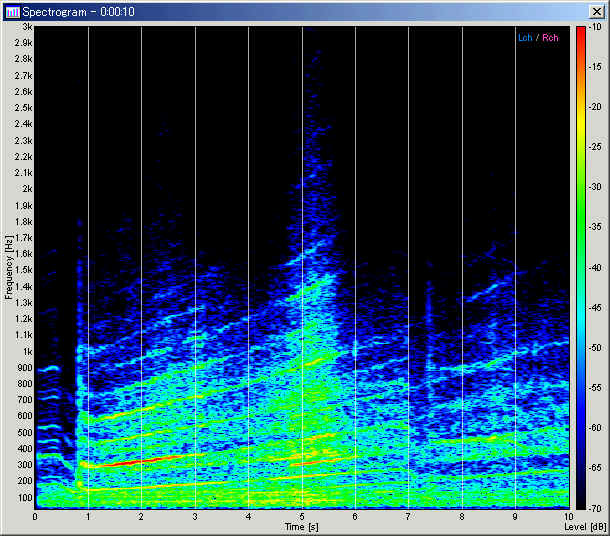
Below is the power spectrum at 1.5 s. We can see the fundamental frequency (F0) at 150 Hz. Its second, third, and fourth harmonics are clearly visible. The even harmonics (F0 x 2 at 300 Hz, F0 x 4 at 600 Hz, and so on) are stronger than the odd harmonics (F0 x 3 at 450 Hz, F0 x 5 at 750 Hz, and so). This balance of the harmonics may be related to the tonal quality of the engine sound.
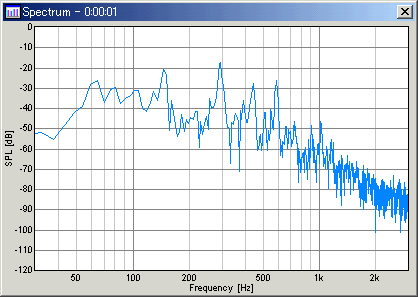
February 2002 by M. Sakurai